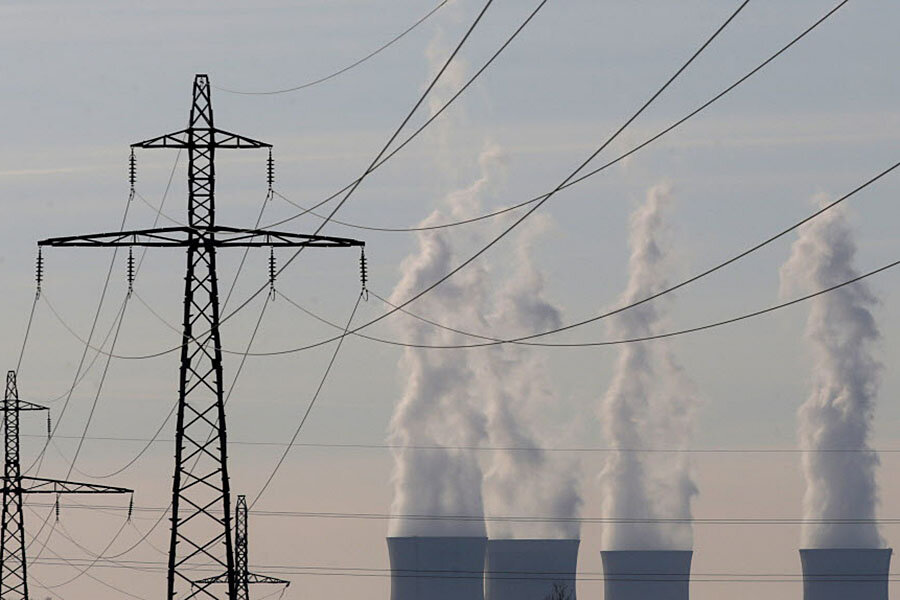Keys to a low-carbon future on both sides of the pond
Loading...
This week the European Union approved plans for an ‘Energy Union’ to better coordinate energy policy and markets among its 28 member countries. The effort was initially prompted by the Ukraine crisis, with the goal of reducing EU reliance on Russian natural gas, which remains a key objective. But many analysts believe the most important long-term impact of the Energy Union effort will be to push for integration of Europe’s disparate and disconnected electricity markets in an effort to both reduce retail prices (now twice as high as those in the US) and also meet Europe’s ambitious climate goals.
At the Brussels Forum Energy Dialogues sponsored by the German Marshall Fund, experts noted that increasing electricity integration across Europe is essentially a prerequisite for large scale renewable energy on the continent, a critical step in the decarbonization of the EU economy. For example, the sun shines in Spain and Italy at different times than the wind blows in Denmark, but those sources are currently unconnected and so cannot supplement one another. Meanwhile hydropower in Norway and other sources could be used as base load power (a sort of “battery”) to balance the whole system electric grid system, especially if there were more power line interconnections and more free trading between nations and regions, as envisioned by the Energy Union.
But introducing greater levels of renewable energy into the market means that the system is flooded with near-zero marginal-cost resources in certain hours, the same hours that traditional coal and natural gas plants use to make the most money. This is one of the underlying causes of the utility industry tumult in Germany and other EU members.
To effectively implement the Energy Union vision and cut emissions from the power sector cost-effectively, the European Commission will need to propose legislative initiatives including binding renewables targets, energy market integration with a more continental grid and interconnected infrastructure, efficiency initiatives, consumer demand response reduction technologies like smart metering, and long-term technology research and deployment.
In the US, meanwhile, recent headlines have focused on Senate Majority Leader Mitch McConnell’s urging states to defy requirements under draft regulations from the Environmental Protection Agency to compel plans from states to reduce greenhouse gas emissions from their electric utility sectors. Yet the current US divide between Republicans and Democrats over the Obama regulatory agenda to cut carbon emissions, while politically serious, may be masking increasing policy changes at the state level to reduce emissions, including the lower costs of renewable energy, a revolution in energy efficiency, and investments by everyone from electric utilities to consumers to Apple and Google in the advanced electricity technologies. Thus, the transition to a lower carbon US electricity sector may be both cheaper and less politically divisive than partisan actors on both side are portraying right now.
For one thing, many Republican dominated ‘red’ states are already pursuing innovative programs to cut emissions and save money, as a study last year by the Hoover Institution and Stanford’s Steyer-Taylor Center on Energy Policy and Finance found.
And while cheap natural gas prices are moving utilities away from more emissions-heavy coal generation, falling wind and solar prices are making renewable energy competitive, and cheaper than coal or gas in some markets. More than one-third of all US new electricity generation in 2014 was solar power, not surprising given that the price of large scale solar has fallen 70% in the last 7 years. California, long an innovator in energy technology and efficiency, recently announced a goal of generating half of its electricity from renewable energy by 2030, using policies very similar to those outlined in the EU Energy Union plan.
The bottom line is that the path to less expensive, lower emissions electricity systems in the US and EU share many basic features, including: integration of markets and infrastructure, expansion of increasingly low-cost renewable energy through smart grids, demand side response, management and storage through deployment of consumer technology, and increasingly aggressive efficiency measures to reduce overall demand.
Although many in the US and Europe resist comparisons of our very different cultures and economies, the larger forces of climate change, technology development, and market evolution in the utility sector are leading both America and the EU in the same direction when it comes to low emissions electricity policy. Which should be good news, for both consumers and climate protection, in the long run.
Paul Bledsoe is President of Bledsoe & Associates, an energy consultancy, and a senior fellow on energy and society at the German Marshall Fund of the United States.





